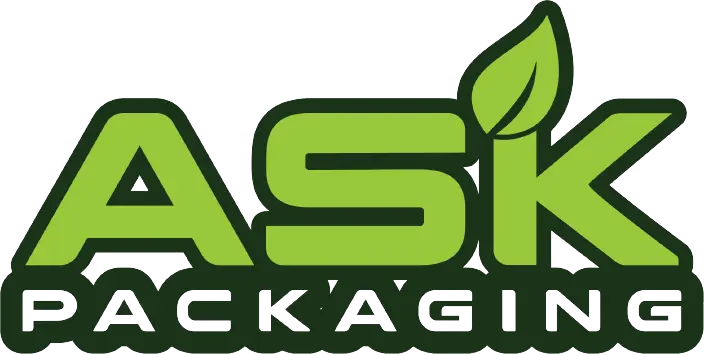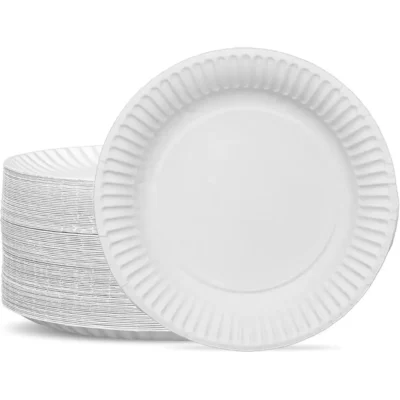Paper Plates
Serve in style with our white disposable paper plates. Perfect for parties, picnics, weddings, and everyday use. These eco-friendly paper plates are strong, lightweight, and a convenient alternative to plastic. Ideal for all occasions, our recyclable paper plates make cleanup quick and easy.
Products: 6 Inch • 7 Inch • 9 Inch

Disposable Paper Plates for Parties

Paper Plates (9 Inch)
£6.49 – £26.99Select options This product has multiple variants. The options may be chosen on the product page
Paper Plates (7 Inch)
£5.99 – £23.99Select options This product has multiple variants. The options may be chosen on the product page
Paper Plates (6 Inch)
£5.99 – £23.99Select options This product has multiple variants. The options may be chosen on the product page
Paper Plates: Practical Uses and Environmental Impact
Paper plates have become a go-to option for many of us when we need quick, convenient tableware. Whether we’re hosting a party, planning a picnic, or looking for an easy clean-up after a family meal, paper plates save us time and effort. Paper plates are valued for their practicality, affordability, and the variety of styles they come in for any occasion.
We can find them in different sizes, shapes, and colours, making them suitable for everything from children’s birthdays to outdoor barbecues. Since they’re disposable, there’s no need to worry about washing up piles of plates after our gathering. For anyone planning an event or just wanting to make everyday life simpler, paper plates are an easy and budget-friendly choice.
What Are Paper Plates?
Paper plates are lightweight, disposable dishes used for serving food. They are popular for their convenience and are chosen when we want to avoid washing up or use plates for a short time. They come in many sizes, shapes, and materials, making them suitable for many types of meals and occasions.
Materials and Manufacturing
Most paper plates are made from pressed paper pulp, often sourced from wood or recycled paper. Some plates also use bagasse, which is a by-product of sugarcane processing. This material is sturdier and resists grease, making it ideal for holding hot or oily foods.
During manufacturing, the pulp or bagasse is mixed with water and then pressed into a plate shape using moulds. Sometimes, a thin layer of plastic or wax is added to make the plates more waterproof and stop them from soaking through. More eco-friendly paper plates skip plastic coatings, so they break down faster in compost or landfill.
We can find plates that use only plant fibres and are fully biodegradable. There are also variations in thickness and strength, with some designed for light snacks and others for heavier meals. The choice of material affects the plate’s strength and whether it can be composted or recycled after use.
Types of Paper Plates
There are many types of paper plates to choose from. Standard paper plates are lightweight and work best for dry, cold foods. Heavy-duty plates use thicker paperboard or bagasse for sturdiness, making them fit for hot meals, sauces, or foods with grease.
Some disposable paper plates come with divided sections, which are good for keeping foods separate. Others may have decorative prints or coloured edges, often used at parties and events to match a theme.
It is common to see plates labelled as biodegradable or compostable, especially those made from bagasse, bamboo, or palm leaves. Some plates have a glossy surface due to a thin coating, which can help with durability but may limit composting options.
Common Uses and Occasions
We often choose paper plates for picnics, birthday parties, school events, and barbecues because they are light and easy to carry. They are also popular at large gatherings where washing up would take too long or be impractical.
Paper plates are used by caterers for quick food service, as they can simply be thrown away after use. They are handy for both indoor meals and outdoor events like camping and festivals.
Disposable paper plates are a common sight at celebrations, workplace lunches, and charity events. They help reduce the time spent cleaning up and are a practical solution when we need many plates at once. In some cases, compostable plates are chosen to minimise environmental impact, especially at eco-friendly gatherings.
Buying Paper Plates: Key Considerations
When choosing paper plates for any occasion, it’s important to look at practical details like how many plates you need and your budget. These factors help us avoid running out or overspending, whether we’re preparing for a large event or a small family picnic.
Pack Size and Quantity Options
Paper plates are sold in many pack sizes, from small collections of 10 or 20 up to bulk packs of 100 or more. We need to match the pack size to our needs—buying too few can cause inconvenience, but too many may result in extra storage space being taken up.
For large gatherings or regular use, purchasing in bulk often makes sense. Bulk packs tend to be more cost-effective per plate and reduce the need for frequent reordering or collection. For smaller events or tight spaces, smaller packs work better and are easier to store.
Let’s also think about delivery options, especially when ordering online. Many suppliers offer free or discounted delivery on larger packs, which can save us time and money.
Cost and Value
The price of paper plates varies based on quantity, material quality, and whether the plates are plain or printed. We should check the unit price per plate to get the best value, especially when comparing smaller packs to bulk.
While price is important, we also need to weigh value against features like plate strength, eco-friendliness, and grease resistance. Cheaper, thinner paper plates can collapse with heavy or greasy foods and may not be the best option for serving meals.
By comparing costs and considering what we really need, we can buy paper plates that fit our budget without compromising on quality or practicality. Always consider the total delivered cost, including any shipping fees, to get an accurate comparison.
Convenience and Delivery Services
Today, getting paper plates has become much easier thanks to online and in-person options. We can choose from fast delivery directly to our homes or pick-up services at local shops, depending on our needs and schedules.
Online Ordering and Free Delivery
We can order paper plates from many websites offering a variety of sizes, materials, and pack counts. Online shops let us review product details and compare prices in just a few clicks. This saves us time and helps us find exactly what we need.
Some retailers provide free delivery, especially when we buy in bulk or spend over a set amount. Delivery services can range from standard two-day shipping to same-day options in some areas. Uber Eats and similar services offer express delivery, with some shops promising arrival in under an hour.
In-Store Collection Options
Sometimes, we need paper plates quickly but do not want to wait for delivery. In-store collection allows us to order online and then pick up our items at a nearby location, often on the same day.
Many supermarkets and catering suppliers let us reserve packs of paper plates online for store pick-up. This means our order is ready when we arrive, which helps us save time. We can also check product availability before leaving home to make sure the items are in stock.
Collection is especially useful for large events or last-minute needs, as we can see the products ourselves before paying. We still get the benefits of quick service without extra delivery fees. If we need more items or forgot something, we can add to our order right up to collection time.
Environmental Impact and Sustainability
Paper plates are popular at parties and events because they are easy to use and throw away. However, the way we make, use, and dispose of these plates affects the environment in several important ways.
Eco-Friendly Paper Plates
Not all disposable paper plates are the same. Some are made with plastic coatings or chemicals to prevent leaks, making them harder to break down. Plates like these often cannot be composted and will stay in landfills for years.
Compostable paper plates are a more sustainable option. These are made from renewable plant materials and do not contain plastic or harmful chemicals. Compostable plates can break down naturally into compost, which is better for soil and reduces waste.
When we choose plates made from recycled paper or plants, we help save trees and lower pollution from making new materials. It’s important to look for labels such as compostable or biodegradable when buying.
Quick Tips for Picking Eco-Friendly Plates:
- Check for plant-based or recycled materials
- Avoid plastic or wax linings
- Look for compostable certification
Recycling and Disposal
Most regular disposable paper plates are difficult to recycle. Leftover food, grease, or coatings make it hard for recycling plants to process them. When these plates go into landfill, they add to waste and can take a long time to break down.
Compostable plates are better for disposal if local waste facilities accept them. We should check with our local council to see if compostable waste pickup is available. If not, at-home composting is another way to dispose of these plates responsibly.
If paper plates are clean and free from food or coatings, some recycling centres may accept them. However, most used plates end up as rubbish because of contamination. Being careful about how we throw them away can help reduce their impact on the planet.



